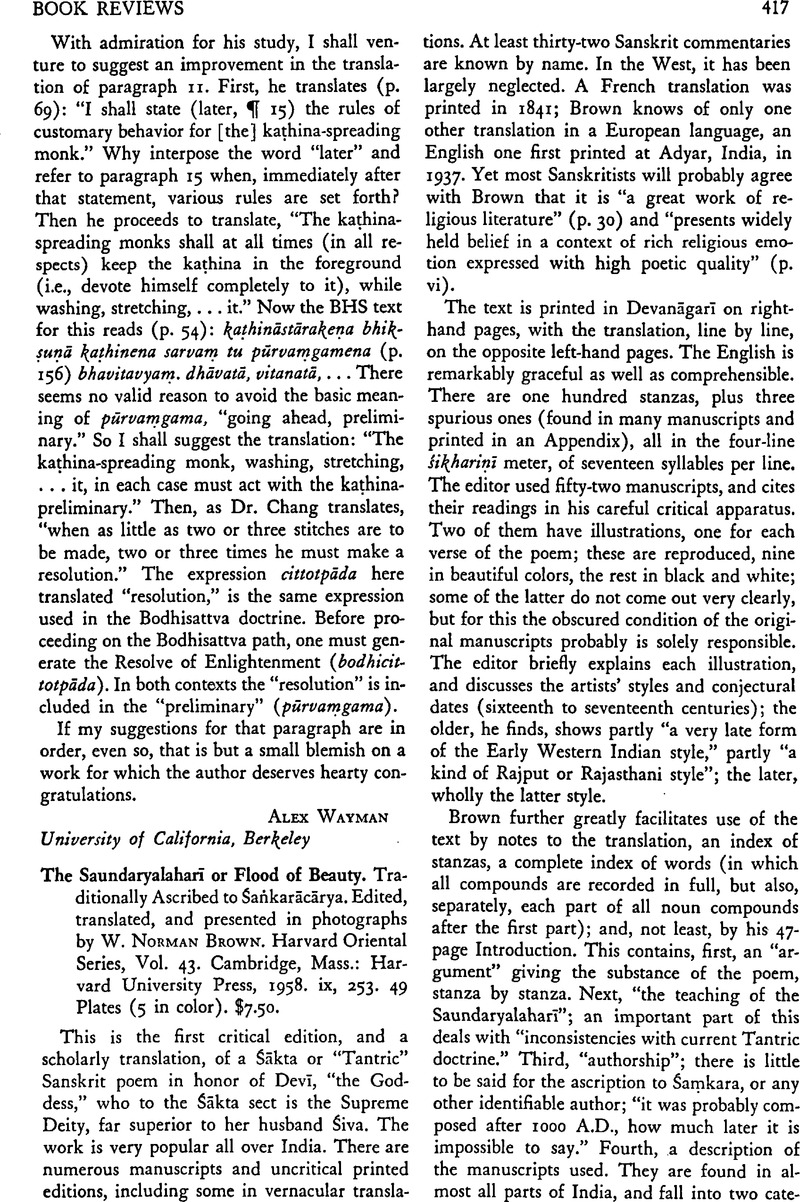No CrossRef data available.
Article contents
The Saundaryalaharī or Flood of Beauty. Traditionally Ascribed to Sankaracarya. Edited, translated, and presented in photographs by W. Norman Brown. Harvard Oriental Series, Vol. 43. Cambridge, Mass.: Harvard University Press, 1958. ix, 253. 49 Plates (5 in color). $7.50.
Published online by Cambridge University Press: 23 March 2011
Abstract

- Type
- Book Reviews
- Information
- Copyright
- Copyright © The Association for Asian Studies, Inc. 1959
References
1 Nor does it occur anywhere in the poem in this technical sense; bindum in st. 19 means “dot” (anusvāra) over a written letter.
2 In the same st. 11, non-Sanskritists might have been told that śrïaṇṭhas and śvayuvatis in (a) literally mean Śivas and Devïs respectively. In (c), aśra-“angle” seems strange for “petal.” And in (d), can caraṇa- mean “dwelling-place”? At most possibly “course, movement,” but this meaning seems to be nearly restricted to the Veda. Many mss. read bhavana or śaraṇa-, either of which may mean “dwelling-place” and could properly be adopted.




